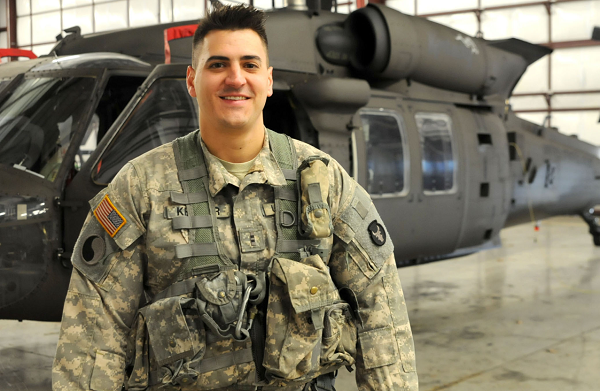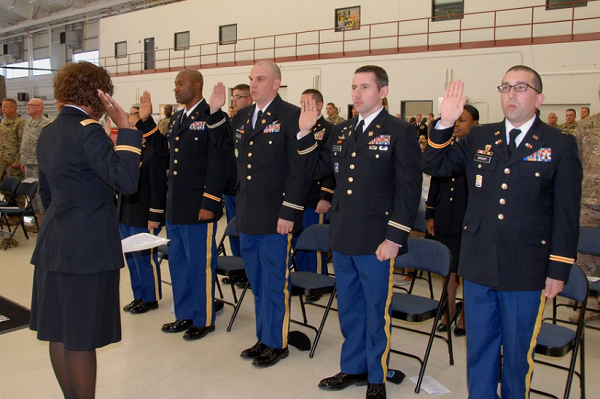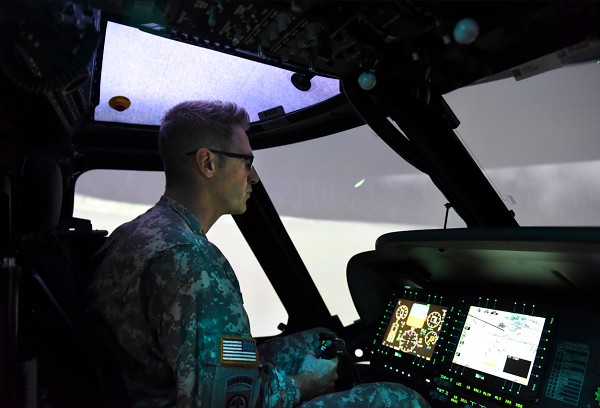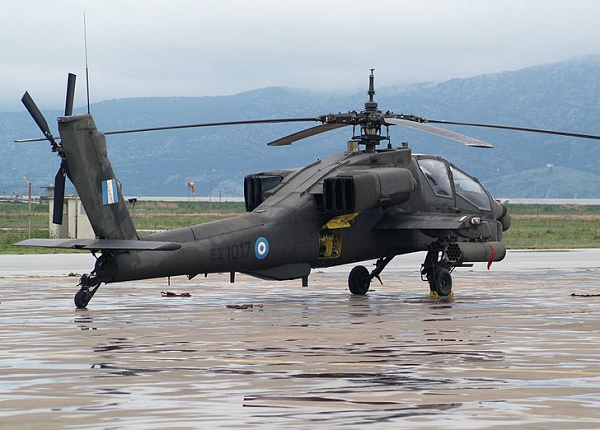All branches of the United States Military have an aviation program.
Army pilots assist with both offensive and defensive operations.
They perform air assault in addition to transporting both cargo and personnel.
The majority of aircraft in the Army are helicopters, but there are a limited number of fixed-wing and unmanned aircraft pilots as well.
In this article, we will discuss the requirements to enter into the Army as a pilot, the two officer path options, flight school, and what happens after training.
Keep reading for the Army helicopter pilot requirements.
Related Article – Air Force Pilot Requirements
Table of Contents
Basic Army Helicopter Pilot Requirements

Age: To become an Army helicopter pilot, you must be at least 18 years old. Future pilots have to enlist prior to passing their 33rd birthday.
Height: Future pilots cannot be shorter than 64 inches and cannot be taller than 76 inches.
Weight: Weight requirements are the same as general Army requirements where individuals must meet Body Fat standards and be appropriate weight per their height. (Find them here).
Vision: Vision cannot be worse than 20/50, correctable to 20/20.
Individuals must have normal color vision and depth perception.
Citizenship: Pilots must be US Citizens prior to enlisting.
Clearance: Becoming an Officer or Warrant Officer requires a Secret clearance.
Education: Army Helicopter Pilots must have a high school diploma.
A GED may be allowed with college credit, but only a select number of applicants will be approved with a GED.
Commissioned Officer path requires a four-year degree.
The Army offers a program that allows individuals to take the path to flight school after completing high school without a four-year degree. Details here.
Advanced Army Helicopter Pilot Requirements
ASVAB: A minimum score of 110 is required on the General Technical (GT) portion of the ASVAB test. This score cannot be waived.
SIFT: A score of 40 or higher on the Selection Instrument for Flight Training (SIFT), is required. This score cannot be waived.
Service Obligation: Enlisting into the Warrant Officer Flight Training Program requires an initial three-year enlistment, until completion of Warrant Officer flight training, when a ten-year obligation is required.
Background Check: National Agency Check, Local Agency Check, and Credit Check must be favorable.
Medical: Future pilots are required to meet all entry medical fitness standards at a Military Entrance Processing Station (MEPS).
A Class 1A Flight Physical Examination must be completed and less than 18 months old.
Class 1A Flight Physical Examinations are performed and then submitted to the US Army Aero-Medical Center (USAAMC) at Fort Novosel, AL, for approval.
Pilots will provide an extensive medical history and all supporting documentation during the physical.
Some prior medical history, such as serious medical injuries or conditions will be disqualifying, while some minor medical issues, such as previous LASEK surgery can sometimes be approved with a waiver.
Flight physicals will require medical testing on various components of the body, blood testing, physical performance testing, and more.
The results will not be readily available and can sometimes take a few months prior to receiving them.
Warrant Officer Packet: Those who wish to enter as a Warrant Officer are required to complete a packet.
The packet contains information such as testing scores, education history, and personal reference letters.
The packet will be submitted to the Board for review and admission entrance.
Not all applicants are admitted, so testing well and submitting a complete packet will help increase chances.
Related Article – Army All Source Intelligence (AOC 35D): Career Details
What happens when you are selected for training?
The first step to becoming an Army helicopter pilot is to become either an Officer or a Warrant Officer.
Most Army pilots are Warrant Officers.
While Warrant Officers are leaders, their job is to become technical experts in their field, in this case, aviation, its systems, and the missions performed.
Commissioned Officers will assign training, report to higher command, schedule troops, and perform more administrative functions than a Warrant Officer.
Path One: Warrant Officer
Warrant Officers are not required to have a four-year degree prior to entering the program.
They will first attend Basic Combat Training, then Warrant Officer School before attending Flight School.
Basic Combat Training
Future pilots in the Warrant Officer path will attend Basic Combat Training at one of the Army’s four Basic Training locations.
Basic Training lasts approximately 10 weeks.
Training is broken into three phases:
- Red Phase: First phase includes orientation, physical readiness testing, CBRN readiness, and learning how to be a soldier.
- White Phase: The second phase includes weapons training, hand-to-hand combat, physical training, Warrior Tasks, and Battle Drills.
- Blue Phase: During the final phase, recruits will improve on marksmanship skills, learn to engage targets, convoy operations, how to identify/disable improvised explosive devices, weapons training, and land survival.
Warrant Officer Candidate School

Warrant Officer Candidate School teaches individuals how to be leaders.
School lasts 5-7 weeks and is not for the faint of heart.
It enhances capabilities both physically and mentally.
You will be required to take the Army Physical Fitness Test within the first week at Warrant Officer Candidate School.
Most days have roughly 18 hours of training and physical training can include marches up to 10 kilometers.
Students learn to be confident in their decision-making and their abilities to lead troops.
They learn leadership skills and the history of warrant officers.
Warrant Officers are highly technically trained in their area of specialty.
After completion, Officers are ranked as WO-1.
Path Two: Commissioned Officer
Those wishing to enter into flight training as a commissioned officer must first complete commissioning.
Commissioned Officers are required to have a four-year degree.
To become commissioned, you have to attend Officer Candidate School, ROTC, or another commissioning path such as a military academy.
Related Article – Army AIT: A List Of All 11 Locations + Training Summary
Officer Candidate School
Army Officer Candidate School is located at Fort Moore, Georgia.
It is 12 weeks long and teaches individuals basic leadership and tactical skills.
Officer Candidate School is completed in two phases:
- Phase 1: Students learn basic leadership skills, complete physical and mental challenges, and are evaluated based on those challenges.
- Phase 2: Training is tested in a field environment, with an 18-day training mission aimed at showing your leadership abilities.
At the end of OCS, you will become a commissioned officer.
Other Paths
Army ROTC (Reserve Officers’ Training Corps), allows individuals to attend college to earn a degree while still serving time in the military.
The United States Military Academy allows cadets to earn a college degree at West Point.
This path also teaches military customs.
Flight Training
At this point, the training for both Warrant Officers and Commissioned Officers is the same.
Initial Entry Rotary Wing Training is located at the U.S. Army Aviation Center of Excellence at Fort Novosel, Alabama.
Training is broken into four phases that total 32 weeks with 179 hours of flight instruction.
Phase One
During this two-week stage, students learn basic flight concepts.
This stage does not have any fly time, as students learn aerodynamics, weather, start-up procedures, and basic control techniques.
Phase Two
Phase two is actually considered the primary phase and lasts approximately 10 weeks.
This phase teaches basic fundamentals, learning to perform approaches. and basic maneuvers.
Students will complete 60 hours of flight time in the training helicopter, TH-67 Creek.
Once students master basic maneuvers they will complete their first solo flight and move on to progressively difficult procedures involving emergency procedures, slopes, and confined area operations.
Phase Three
Phase three consists of 30 hours in the flight simulator and 20 hours in the TH-67 training helicopter.
This phase lasts eight weeks and focuses on instrument training.
During this time, future pilots go from basic instrument abilities to navigating federal airways.
When this phase is completed students will receive a helicopter instrument rating at graduation.
Phase Four
During this phase of training, future pilots will work on combat skills.
Training is completed in the OH-58 A/C.
This phase includes extensive combat mission oriented training, night vision goggle training, and tactical night operation training.
Related Article – Navy Pilot Requirements
What happens after training is complete?
After training is complete students are considered pilots and earn their wings.
They can then attend Advanced Graduate Flight Training.
Advanced Graduate Flight Training

After completing initial flight training, individuals attend Advanced Graduate Flight Training to become specialized in the AH-64A, AH-64D, CH-47D, or UH-60A.
The courses teach advanced skills in specific aircraft.
Training usually lasts anywhere from 14-23 weeks and allows individuals to be prepared in the aircraft that they will utilize in the event of deployment.
After all training is complete individuals will be stationed at bases around the world, based on the type of aircraft they have become skilled in, and the needs of the Army.
Quick Frequently Asked Questions
How old do you have to be to become an Army helicopter pilot?
To become an Army helicopter pilot, you’ll need to be at least 18 when you enlist and no older than 33.
What ASVAB scores do you need to become an Army helicopter pilot?
You’ll need to score at least 110 on the General Technical portion of the Armed Forces Vocational Aptitude Battery.
Does becoming an Army helicopter pilot make you an officer?
Army helicopter pilots are either commissioned officers or warrant officers. Without a four-year degree, a successful candidate will attend Warrant Officer School and then Flight School, earning the rank of Warrant Officer as an Army helicopter pilot.
How long is training to become an Army helicopter pilot?
Without a degree, you’ll need 10 weeks of Basic and 5 to 7 weeks of Warrant Officer School. With a degree, Officer Candidate Training is 12 weeks long. Flight School is 32 weeks, and specialty training is 14 to 23 weeks.
How much do Army helicopter pilots make?
Like all Army positions, helicopter pilots are paid according to rank and time in service. Pilots do receive extra flight pay monthly and retention bonuses may occasionally be available depending on demand.
Conclusion
There are two paths to becoming an Army helicopter pilot, and both result in being an Officer.
After meeting the stringent background, medical, and prerequisite requirements, future pilots will complete their requirements to become an officer prior to attending flight school.
The total training time to become an Army helicopter pilot can be over two years, depending on the path that you take.
Once all Army helicopter pilot requirements are met and training is complete, soldiers are given their prestigious wings.
Related Article – How To Join The US Marine Corps
References
Flight Warrant School Requirements
- Ikon Pass Military Discount: Learn How To Save Big - January 31, 2025
- RTIC Military Discount: Find Out How To Save Big on Gear - January 30, 2025
- Traeger Military Discount: Learn How To Save Big on Smokers - January 28, 2025

